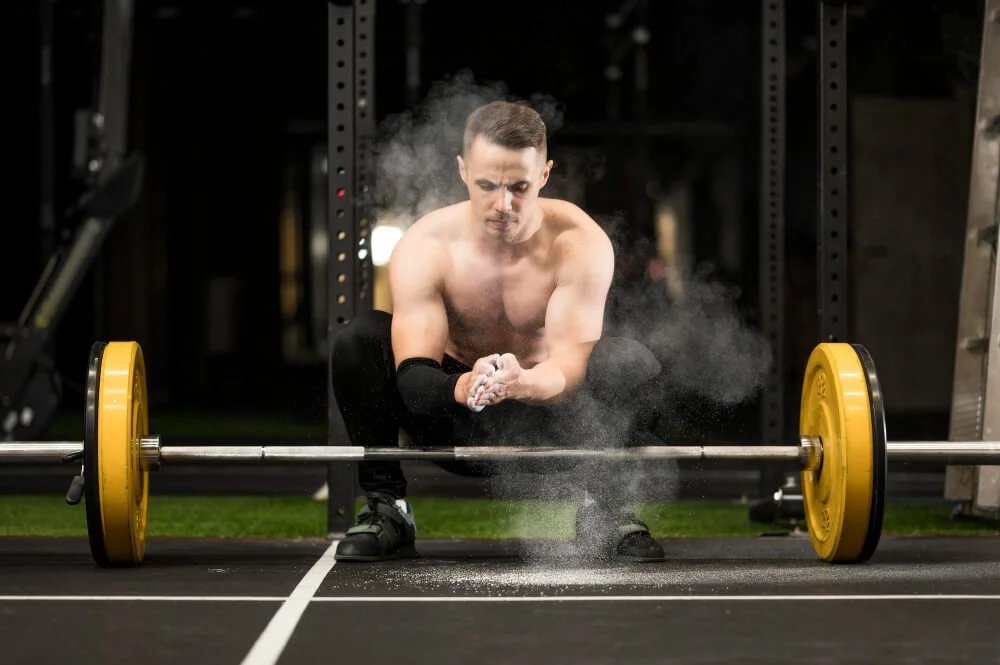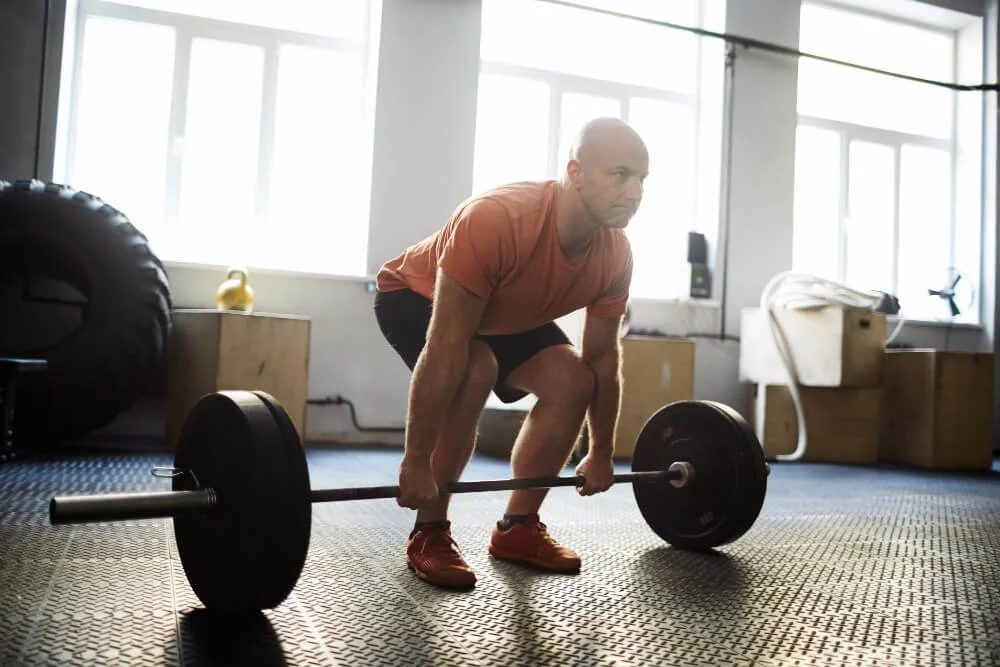The Best Exercise You Are Not Doing - Dead Lifting
/Dead lifting is often referred to as the king of exercises. While some people shy away from it due to its perceived difficulty, dead lifting is one of the most effective workouts for building strength, burning calories, and enhancing functional fitness. If you’re not already incorporating this powerful move into your fitness routine, it’s time to start. But what is dead lifting, and why should you consider adding it to your workouts? Let’s break down the benefits of dead lifting, explore proper dead lifting form, and understand the impact it has on your overall fitness.
What Is Dead Lifting?
At its core, dead lifting is a compound movement that involves lifting a weight from the ground to hip level in one smooth motion. This seemingly simple action engages multiple muscle groups, including the hamstrings, glutes, lower back, core, traps, and shoulders. The dead lift gets its name because you lift “dead” weight—meaning it begins from a complete stop on the ground.
The dead lift is THE most important lift in the gym in my opinion. Its a compound, multi-joint, multi-muscle movement, incorporating the largest muscles in your body: the hamstrings, glutes, core, traps, and shoulders. Because it involves so much muscle mass there is a tremendous caloric expenditure both during the exercise,and recovery, making it excellent for weight loss. Additionally, multi-muscle activation under heavy loads can elicit significant blood testosterone levels, again facilitating lean muscle development. The dead lift is an excellent functional movement, reinforcing proper technique for lifting heavy objects. Incorporate the dead lift into your routine if you want to maintain a health back, flat, strong core, and lean physique.
Dead lifting comes in several variations, such as the conventional deadlift, sumo deadlift, and Romanian deadlift. Each type emphasizes different dead lifting muscles but generally focuses on full-body strength, especially in the posterior chain (the muscles along the back of your body). Because it targets such a broad range of muscles, dead lifting weights can be highly efficient in building strength and endurance quickly.
Dead Lifting Form: Getting It Right
Understanding and practicing proper dead lifting form is essential to prevent injury and maximize effectiveness. Here are the steps to follow for correct deadlift form:
Set Up: Start with your feet hip-width apart and position the barbell over the middle of your feet. Your shins should be close to the bar but not touching it.
Grip the Bar: Bend at your hips and knees, then grip the bar just outside your knees with an overhand grip.
Brace Your Core: Tighten your core, keep your chest up, and pull your shoulders back. Your back should be flat or slightly arched, not rounded.
Lift: Push through your heels, extend your hips, and pull the bar off the ground, keeping it close to your body. As you rise, keep your chest up and your back straight.
Lower with Control: To lower the weight, push your hips back, let the bar slide down your thighs, and bend your knees once the bar passes them.
Correct form helps distribute the load evenly across your muscles, reducing strain on any one area and allowing you to lift heavier weights safely. By maintaining good technique, you can fully enjoy the dead weight lifting benefits and work multiple muscle groups with confidence.
What Does Dead Lifting Do for Your Body?
The benefits of dead lifting go far beyond just building muscle. Here are some key ways dead lifting positively impacts your health and fitness
Strengthens Multiple Muscle Groups
Dead lifting is a multi-joint exercise that works various large muscle groups at once. It’s particularly effective for the hamstrings, glutes, lower back, and core, which play vital roles in stability and balance.
Boosts Caloric Burn
Since dead lifting engages so many muscles simultaneously, it demands a high level of energy. This helps to burn calories during the workout and continues to boost your metabolism even after you’ve finished.
Improves Functional Strength
The dead lift mimics movements you perform in daily life, like lifting heavy objects from the ground. Training with dead lifts can help reduce the risk of injury outside the gym by reinforcing proper lifting mechanics.
Enhances Core Stability
As you lift, your core engages to stabilize your spine. Over time, this leads to a stronger core, which is beneficial for everything from posture to athletic performance.
Supports Hormone Production
Lifting heavy weights like in dead lifting can increase testosterone and growth hormone levels, both of which are essential for building muscle and burning fat.
Dead Lifting Muscles: A Full-Body Workout
One of the biggest dead lifting benefits is that it targets multiple major muscle groups, making it one of the most comprehensive strength-training exercises. Here’s a look at the primary dead lifting muscles you’ll engage.
Table:
| Muscle Group: | Function: |
| Hamstrings | Located at the back of your thighs; they extend the hips and stabilize the legs during the lift. |
| Glutes | Vital for extending the hips and creating a powerful lifting motion. |
| Lower Back | Spinal erectors support a neutral spine and help manage the weight during lifting. |
| Core | Engages to protect the spine and maintain balance throughout the movement. |
| Traps and Shoulders | Help maintain grip on the weight and keep the upper body stable during lifting. |
This broad activation makes dead lifting ideal for building functional strength and balanced muscle development across your entire body.
Dead Lifting for Weight Loss: Burn Fat and Build Muscle
Dead lifting is not only effective for building strength but can also play a big role in weight loss. Because it requires significant energy expenditure, dead lifting helps burn calories and build lean muscle simultaneously. Dead lifting for weight loss works due to its high level of intensity and the metabolic demand placed on your body. As you build muscle, your body burns more calories at rest, aiding in long-term fat loss.
Moreover, dead lifting keeps your metabolism elevated even after your workout, contributing to what is known as the “afterburn” effect. By regularly incorporating dead lifting workouts into your fitness routine, you can accelerate fat loss and improve your overall body composition.
Dead Lifting Benefits Beyond the Gym
While dead lifting offers clear physical benefits, the advantages go beyond appearance and strength. Here are some additional dead weight lifting benefits that you might not expect:
Mental Resilience: Dead lifting requires focus, discipline, and patience. It’s a mental challenge to lift heavy weights, and overcoming it can build confidence and resilience.
Improved Posture: Dead lifting promotes core strength and back stability, which translates into better posture. Over time, a stronger core helps support your spine and reduces strain on your lower back.
Injury Prevention: By practicing proper dead lifting form, you’re training your body to lift heavy objects safely, reducing the risk of back injuries both inside and outside the gym.
Tips for Starting Dead Lifting Workouts Safely
If you’re new to dead lifting, it’s crucial to start with light weights and focus on your form. Rushing to lift heavy weights too soon can increase the risk of injury. Here are some helpful tips for getting started safely:
Start with a Trainer: If possible, work with a trainer to learn proper form. They can help correct your posture and guide you in choosing the right weight.
Warm Up: A proper warm-up prepares your muscles and joints for the heavy load of dead lifting. Include dynamic stretches and light cardio to get your body ready.
Focus on Form Over Weight: It’s tempting to go heavy, but it’s better to master the movement with a lighter load before increasing the weight.
Incorporating dead lifts into your routine will not only boost your strength but also contribute to your overall fitness goals. Whether you’re interested in weight loss, functional strength, or muscle gain, the benefits of dead lifting are hard to ignore.
Why You Should Add Dead Lifting to Your Routine
Dead lifting is more than just an exercise; it’s a pathway to a stronger, healthier body. By engaging multiple muscle groups, burning calories, and improving core stability, dead lifting supports various fitness goals. The dead lifting benefits extend from the gym to everyday life, enhancing functional strength and reducing the risk of injury.
So, if you’re looking to take your fitness to the next level, start incorporating dead lifts into your workouts. Embrace this powerful lift to build a lean, strong body and experience all the rewards it has to offer.
-
Dead lifting is a compound exercise that involves lifting a weight from the ground to hip level in one fluid motion. It targets multiple muscle groups simultaneously, making it one of the most effective strength-building exercises in fitness.
-
Dead lifting builds strength, increases muscle mass, and promotes fat loss due to the high energy demand of the movement. It also enhances functional strength, improves posture, and helps stabilize the core, benefiting overall fitness.
-
Dead lifting works several key muscle groups, including the hamstrings, glutes, core, lower back, traps, and shoulders. This wide range of muscle activation makes dead lifting an excellent choice for balanced, full-body strength.
-
Dead lifting helps improve functional strength, making it easier and safer to lift heavy objects in daily life. It reinforces proper lifting mechanics, reduces the risk of injury, and supports overall back health, which is essential for daily activities.
-
Dead lifting boosts metabolism and promotes calorie burn due to its high intensity. By building lean muscle, dead lifting helps increase the body’s resting metabolic rate, which contributes to long-term weight loss and a toned physique.



